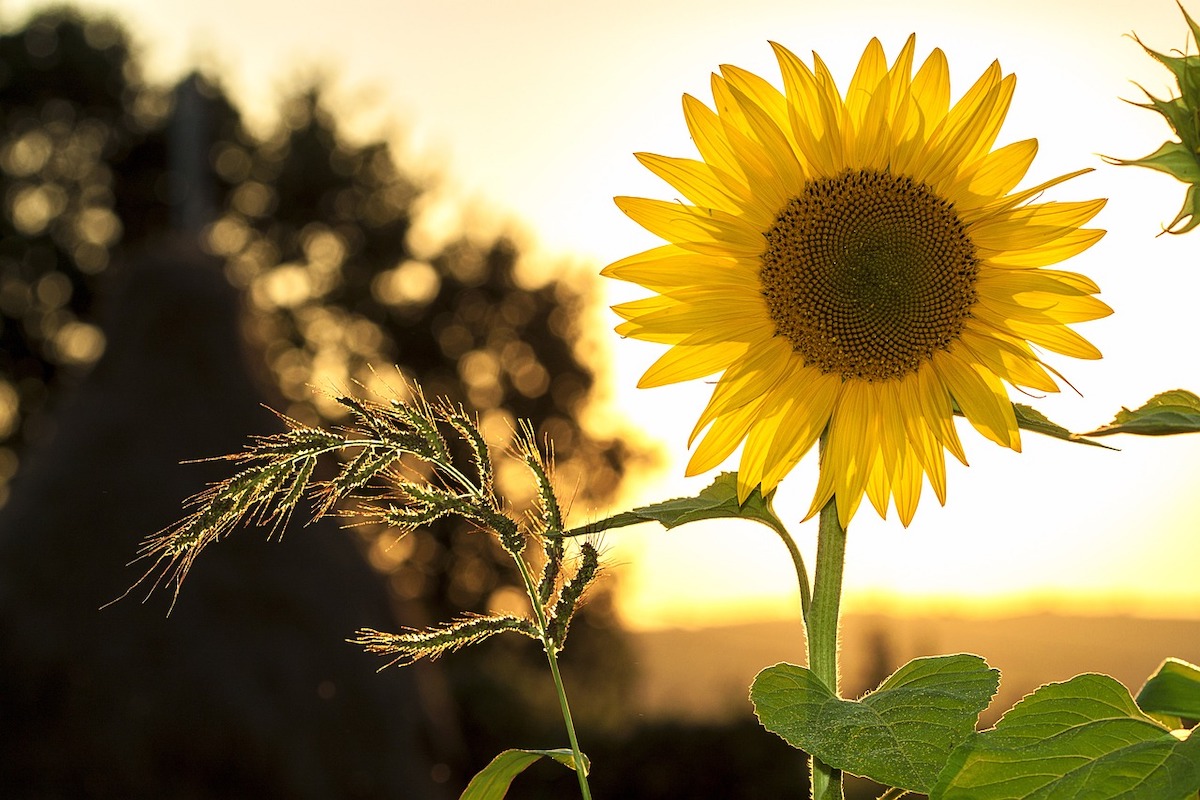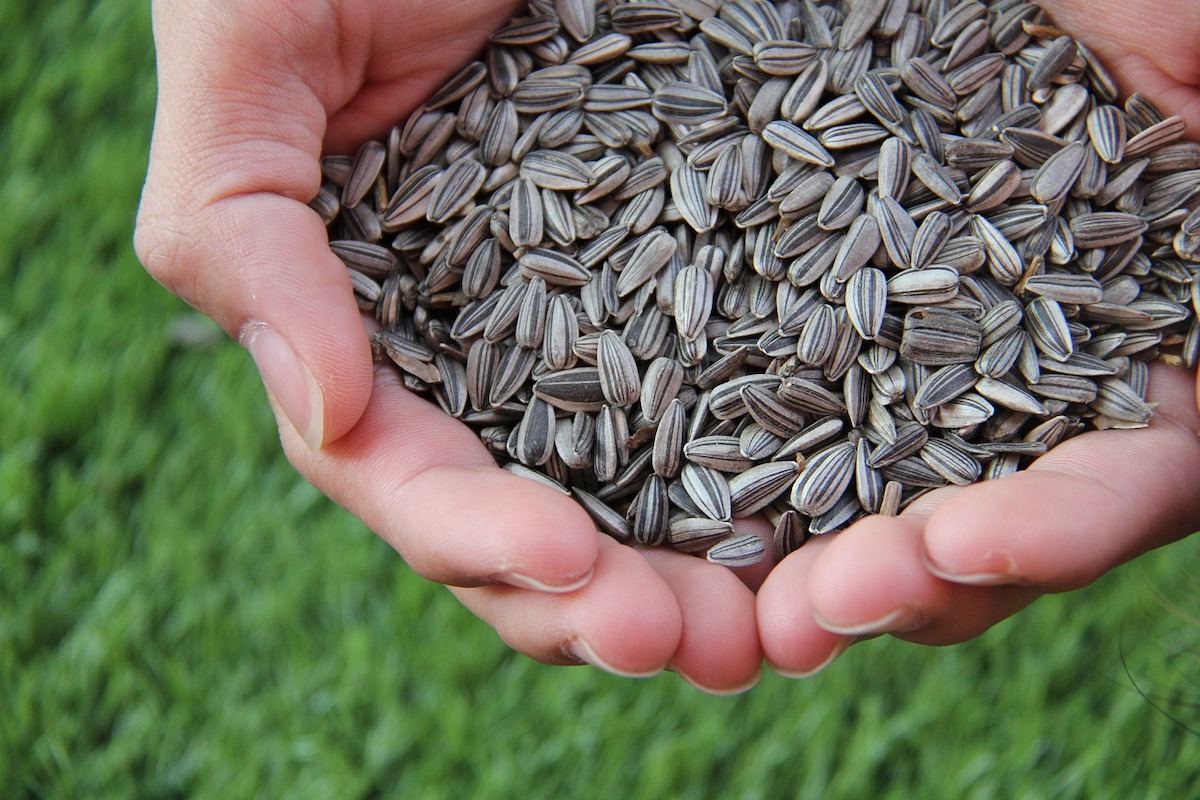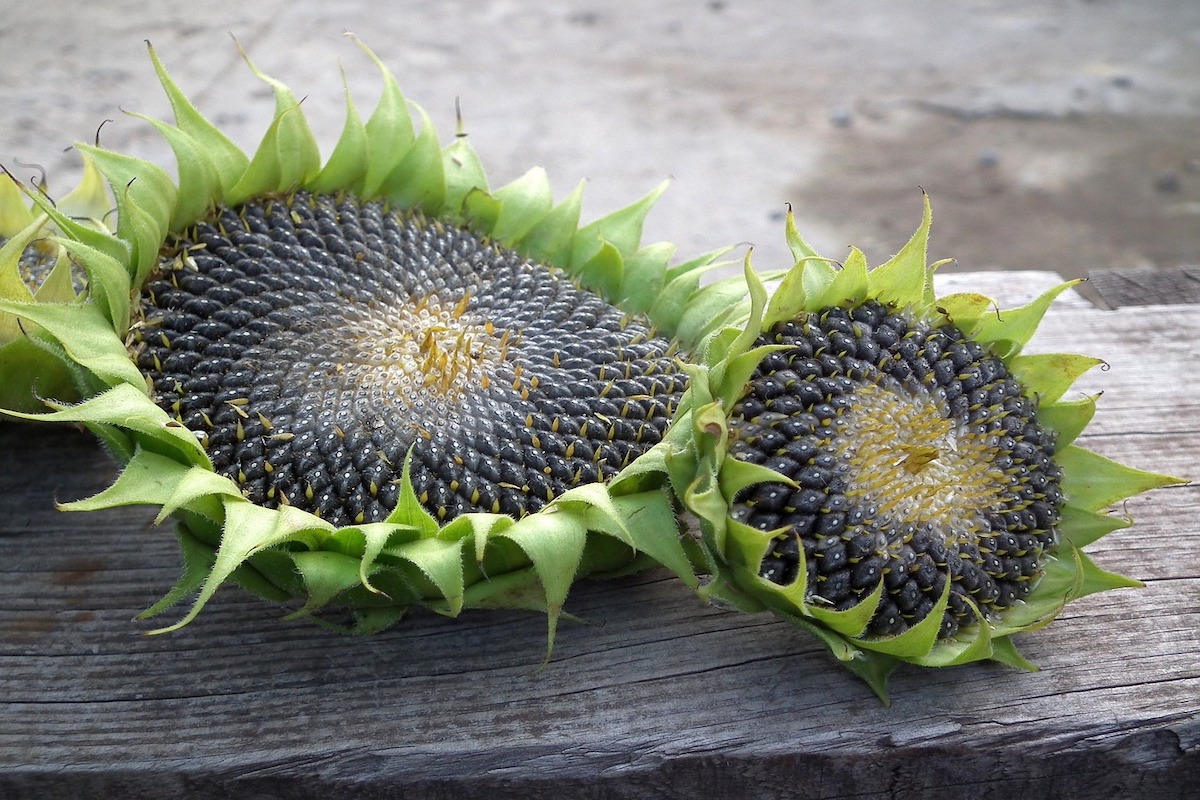There’s nothing that screams “summertime” quite like a sunflower in full bloom. Sunflowers are simple and rewarding flowers to grow from seed, and the vibrancy they add to the garden is unmatched. This guide will teach you how to grow sunflowers from seed to harvest.

How to Grow Sunflowers
Sunflowers are a native flower of the Americas, and they have historically been used ornamentally, ceremonially, medicinally, as food, to produce oils, and to make dyes. They provide many uses in the garden beyond their glorious appearance, but that alone is a worthy excuse for the planting of sunflowers.
Botanical name: Helianthus annus
Hardiness zones: 2-11 USDA
Growth: Annual
Bloom: Generally mid-summer through early fall
Choosing Seed
There are over 60 varieties of sunflowers to choose from, and they differ in size, color, flower appearance, head formation, pollen level, and days to maturity. These are all aspects to consider when choosing your seed.
Size: Sunflowers range from dwarf (small 1-2 ft) varieties to mammoth (gigantic 8-15 ft) varieties. Decide what size works in your space and think about the shade that will be cast as the plant matures. If you are growing larger varieties you will likely need to stake them for support.
Color: We think of yellow when we think of sunflowers, but they can be found in white, shades of yellow, orange, bronze, rust, dark red, and bi-colored varieties.
Appearance: The flower heads on sunflowers can look surprisingly different! You’ll find elongated petals, fluffy flower heads, short petals, and various layered looks.
Head Formation: You can grow single-stem or branching sunflowers. Single-stem varieties will produce only one stem while the branching varieties will produce multiple stems.
Pollen Level: Usually this is a consideration when farmers grow sunflowers for cut flowers, but it only makes sense that the home gardener might want to choose a pollenless variety for their indoor arrangements as well.
Days to Maturity: Most sunflowers fall between 50-120 days to maturity, and that is quite a range! This is important to note when you are succession planting, getting a later start on your garden than intended, or want to get in one last crop before your first frost.

When to Plant
Sunflowers are not frost-hardy and cannot tolerate freezing temperatures. They are heat-loving plants! Wait until after your last frost date (when the danger of frost has passed and your soil has warmed) to direct seed outside or transplant seedlings into the garden. The ideal soil temperature for seed germination is 70 to 75 degrees F, but you can get by with planting as long as it is above 55 degrees.
Sowing or Growing From Seed
Sow ½-1 inch deep (depending on the sunflower seed size). You’ll want your end spacing to be about 6” for dwarf varieties and up to 3’ for the largest mammoth varieties.
If you are sowing directly in the soil, you can either plant more densely or plant 2-3 seeds in every spot to thin once they have emerged. When direct seeding I prefer to plant a couple of seeds together and then thin each spot later. Make sure your soil temp has reached a minimum of 55 degrees F or an ideal 70 degrees F before direct seeding outside.
Starting your seeds indoors to transplant out later is a great way to get a headstart on their growth and provide a controlled environment for their early development. Start your seeds in a good potting mix (there are numerous containers you can use to plant in) 3-4 weeks before you plan on setting them outside. I use 4” pots to give the taproot enough room to grow without having to disturb it too much.
Plant 2-3 seeds in each pot, cover them with potting soil, gently tamp them in, and water until the soil is thoroughly moist. Keep the soil evenly moist until the seeds germinate. You can use a heat mat underneath them to help maintain a warm temperature for your seeds to germinate quicker and more reliably. Leave your grow lights on for 16 hours a day once the seeds have germinated. Thin each pot to one seedling once they begin to develop. Make sure you harden off your seedlings as you transition to planting them outside.
Don’t forget about staking your sunflowers if you expect high winds in your area. While the stalks grow sturdy, they can be snapped by extreme winds. You can also plant them near a windbreak such as a fence for protection.
You’ll find that many animals love munching on baby sunflower seedlings, so consider covering your young seedlings while they initially develop. This can be in the form of a row cover, a cage, or another diy covering that still allows air to the plant.
Growing Conditions
Sunlight: Sunflowers are sun lovers and should be planted in full sun (receiving at least 6-8 hours of sunlight daily).
Water: Water your sunflowers deeply. They have deep root systems and prefer deep watering less often. Make sure they get well established first before backing off on the watering.
Soil: They prefer fertile, well-draining soil. Sunflowers are heavy feeders, so make sure you are planting in soil rich with organic matter. A little compost goes a long way. You’ll also want to make sure your soil is not overly compact, as their long taproots require room to grow. I use a broadfork to reduce compaction in areas of the garden.
Pests & Diseases
Typically sunflowers are relatively hardy, but sunflower moths, thrips, whiteflies, weevils, aphids, sunflower widges, sunflower beetles, cutworms, lygus bugs, and various caterpillars are all pests you can run into at different stages in your sunflower’s growth. First, identify what the pest is. Then, research what organic methods exist for slowing or eradicating the pest.
Sunflowers are susceptible to a number of fungal diseases including mildew, rusts, white mold, and Verticillium wilt. You can help prevent this by watering at the soil level and providing your plants with ample space for air circulation.
Growing Sunflowers in a Pot
Dwarf varieties of sunflowers are well-suited for growing in pots, and larger varieties are feasible although not ideal. Sunflowers can grow large taproots, so they need space to develop to their full size. I suggest using the largest container you can!
You can grow one medium-sized variety (5-7 ft in height) in a 5-gallon pot. Dwarf varieties are simple enough to grow in pots, but they will likely not reach the same size as if planted directly in the garden. Try growing one every 4-6” in your chosen pot.
Your ideal potting soil should be a well-draining potting mix refreshed with compost.
Harvesting Edible Sunflower Seeds

Don’t assume that your sunflowers produce edible seeds! In fact, a majority of varieties do not. Mammoth Grey Stripe, Mammoth Russian, Godzilla, Titan, Sunzilla, Hopi Black Dye, and Paul Bunyon are all larger varieties that produce seeds while Royal and Super Snack are a couple of shorter varieties to note. Always check the seed packet for that info if it is a priority for you.
Sunflowers need pollen to produce viable seeds. The seeds on your sunflowers develop during the pollination stage as your sunflower is developing. When looking to harvest your seeds, wait for the sunflower to fully mature and look for signs that the sunflower seeds are ripe and the plant is on the decline: you’ll notice the sunflower head drooping, the back of the sunflower head turning from green to yellow, the seed head beginning to brown, central disc florets easily wiping off, and the seeds loosening up on the head if you brush your hand over it.
At this point, you can cut the flower head from the stem, collect your seeds, and store them in an airtight container. If you wish to dry them further for easier seed collection, you can hang your sunflower heads to dry before collecting the seeds. This article thoroughly takes you through the harvesting process and possibilities.
FAQs (Frequently Asked Questions)
Sunflowers can grow in moderately fertile soil, but adding a balanced fertilizer or a layer of compost as a top dressing can enhance their growth and flowering.
Sunflowers typically bloom 70-100 days after planting, depending on the variety. Early-flowering varieties may bloom sooner.
Yes, sunflower seeds can be saved for planting the following year. Allow the flower head to mature and dry on the plant, then harvest the seeds for storage.
More on Growing Flowers & Vegetables
Want to have an abundant garden this year? We have you covered.

Leave a Reply